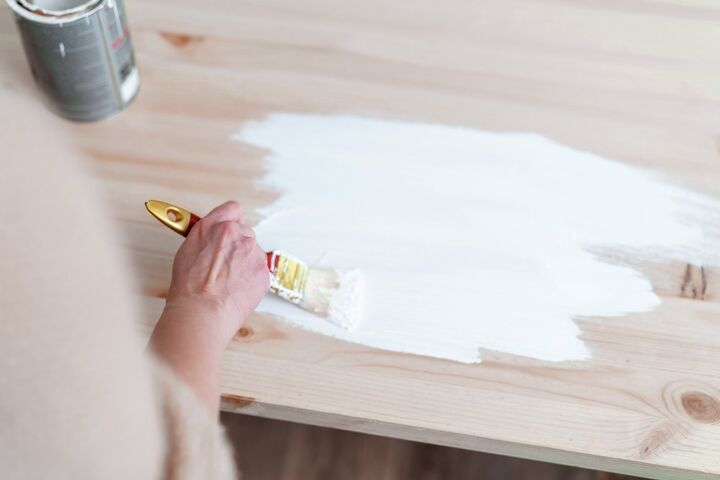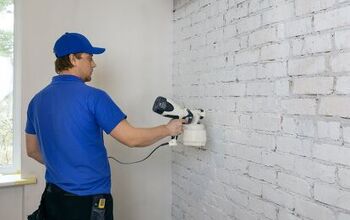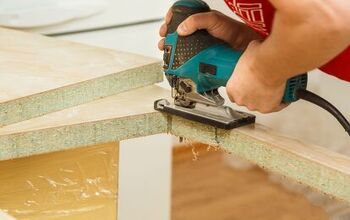What Kind Of Paint To Use In Plywood? (Find Out Now!)

One of the most striking things that people notice about crafting is all the different types of paint you can use. Surprisingly, or perhaps not surprisingly, not all paint is universal. Even in the world of woodworking, certain types of paint will not work with certain woods. That’s why it’s important to know what type of paint to use, even on materials like plywood.
Plywood is not a “picky” type of wood. When in doubt, use simple latex paint (water-based acrylic) for your next plywood painting job. Most interior wall paints work well since they are latex paint, as are most exterior paints. The more important issue is to make sure to get good primer, ideally one that is geared towards plywood.
It’s no joke. Using the wrong type of paint can be a pretty good way to make your project look like trash. To help prevent this, we’re going to talk about what you should use.
Do You Need Exterior Home Paint or Stain Services?
Get free, zero-commitment quotes from pro contractors near you.

What Is The Best Type Of Paint For Plywood?
Believe it or not, good ol’ latex paint is the best pick for most projects involving plywood. Latex paint is a water-based acrylic paint that offers up more flexibility than oil-based paints. It also happens to be easy to use, durable, and easy to clean up after a painting session. The main reason why latex paints are the best choice, though, deals with chipping.
Latex paints are famous for being able to cling to surfaces well, which makes them less prone to chipping than most other types of paint. Since they are especially good at smoothing surfaces out, they work amazingly well with plywood. However, the paint you choose is only half the battle.
If you cannot spring for latex, it’s worth noting that you can also use oil paint. Should you choose to do this, just be prepared for less than ideal (but still passable) results.
What Should You Pay Attention To When You Buy Paint?
Buying paint means that you should keep a keen eye for more things than just the color of the paint. The most important factors to keep in mind include:
- Shine. You can choose from matte, eggshell, satin, semi-gloss, and high gloss.
- Water-Based. Yes, this is basically a must. You need to make sure that you get the right one.
- No Primer Included. While you technically can use paints that have primer added to them, we don’t suggest it. We’re going to get into that in a little bit.
What Tool Should You Use To Paint Plywood?
Here’s the good thing about plywood: there’s a lot of ways to get the job done as far as paint goes. Here’s what you need to use as far as each major painting method:
- Rags. This is ideal for staining, not painting. Even so, certain effects can be created with a little touch of a rag dipped in paint.
- Brushes. If you want to paint plywood with a paintbrush, then you absolutely can. You will also need a tray and to make sure that you remove excess paint before you apply it. Sponge brushes tend to give the most seamless look, but you can also use horsehair brushes if you need to.
- Rollers. I’ll be honest. I am not a huge fan of using rollers on plywood, but that doesn’t mean that you can’t give it a shot. A lot of people find that the smooth, even coat that rollers offer makes plywood usage a breeze.
- Sprays. Spray painting plywood is a good option, as long as you choose a water-based paint. If you’re a fan of graffiti, you already knew that.
Do You Have To Prime Your Plywood?
Unlike other surfaces out there, there’s something to be said about priming plywood. You really do need a coat of primer, but not for the reason of making the paint adhere. Priming plywood is a good way to help smooth out the texture of the wood and also help grip the paint better. The smoothness helps avoid chips and even helps prevent splintering.
What Is The Best Type Of Plywood Primer?
Believe it or not, plywood is one of those are materials where the paint and primer don’t always need to match. Oil-based primer is the best choice for people who want to paint plywood. Oil-based primers are less likely to sink into the wood, which means that they are capable of filling in gaps that would normally happen with rougher plywood. In other words, it further helps reduce the risk of chipping.
If you were to use a water-based primer, then you may have a problem on your hands. Water-based primers tend to require surfaces that are fairly smooth. This is why most materials that work with water-based primers tend to require sanding first. Plywood doesn’t do well with sanding, which in turn, means you might end up with an uneven surface.
Note: When choosing a primer, make sure to get a stain-blocking primer! This is a must.
Do You Need A Topcoat For Your Plywood?
Technically, a topcoat isn’t necessary when you are painting plywood. It’s possible to get a clean, crisp finish without it as long as you use a high-quality paint and primer. However, that doesn’t mean that you should immediately discredit the use of a topcoat across the board. These coats have their own place too!
Topcoats are a good idea whenever you want to have a particular effect, like a weathered look or a slightly textured feel. With that said, most professional painters note that there are two primary paint gloss types that seem to require topcoats with plywood: matte and flat. Without a topcoat on these finishes, there’s a good chance that you will see scuffs and stains.
In some cases, going without a topcoat when you’re applying a matte finish to plywood can leave your plywood prone to drying. This, in turn, can cause serious splintering. So, keep that in mind and make sure to use your common sense.
Can You Stain Plywood?
Most people don’t realize this, but staining plywood is a good way to get the natural finish look of wood with your plywood. It’s a smart alternative and can work out pretty well for people who don’t want the full painted look but still want a pop of color. All stains work well with plywood since they are water-based.
Do You Need Exterior Home Paint or Stain Services?
Get free, zero-commitment quotes from pro contractors near you.

Related Questions
Why does plywood require a stain-blocking primer?
All plywoods contain high levels of resin in the knots they have. This resin will cause staining that makes the knots appear to bleed through the paint and topcoat. No amount of paint alone will be able to overcome the need for stain-blocking primer. It’s possible to have resin bleed through 10 or more coats of paint, so make sure that you avoid that from happening by choosing a stain blocker.
What happens when you add water-based primer to plywood?
If you add water-based primer (or paints sans a primer) to plywood, the water in the primer will cause the wood’s grains to swell. At first, it will not look noticeable. As it dries, the swelling will start to go down. This will cause your paint to look bumpy and streaky. Sadly, this is true even if you try to sand down the area—which, by the way, is also bad for plywood to experience.
Does plywood paint better than other woods?
It depends on the wood, but there is a lot of good news here. Plywood tends to absorb more paint than typical wood does. If you get a primer, you will be able to get better results. However, in terms of just painting the plywood, most people tend to find this to be a great choice. Plywood is not hard to paint, per se. It’s just a bit more time-consuming.

Ossiana Tepfenhart is an expert writer, focusing on interior design and general home tips. Writing is her life, and it's what she does best. Her interests include art and real estate investments.
More by Ossiana Tepfenhart



























